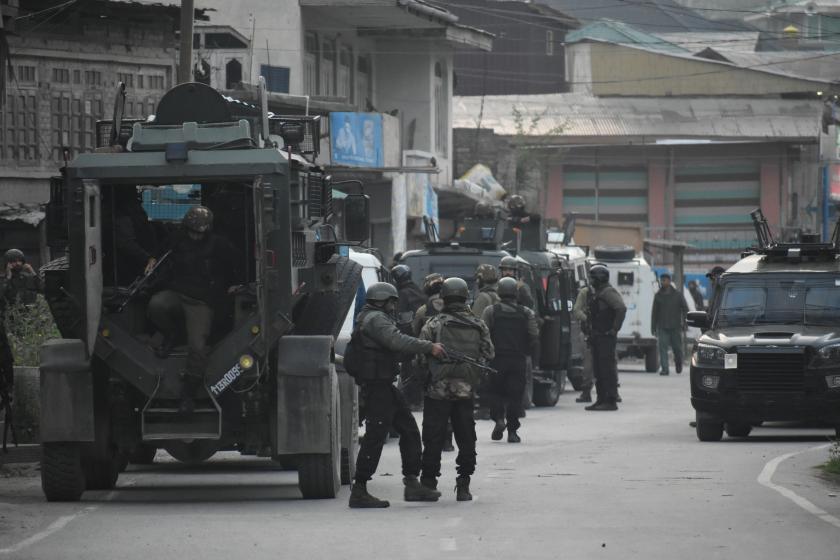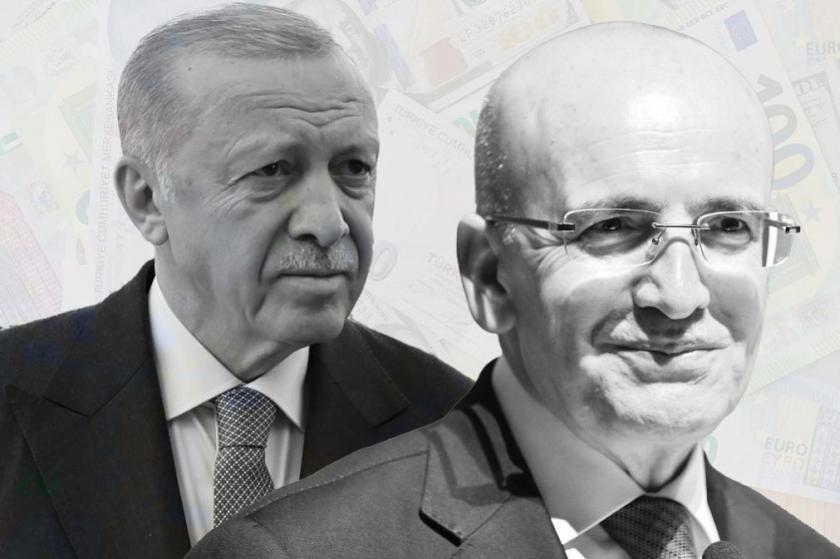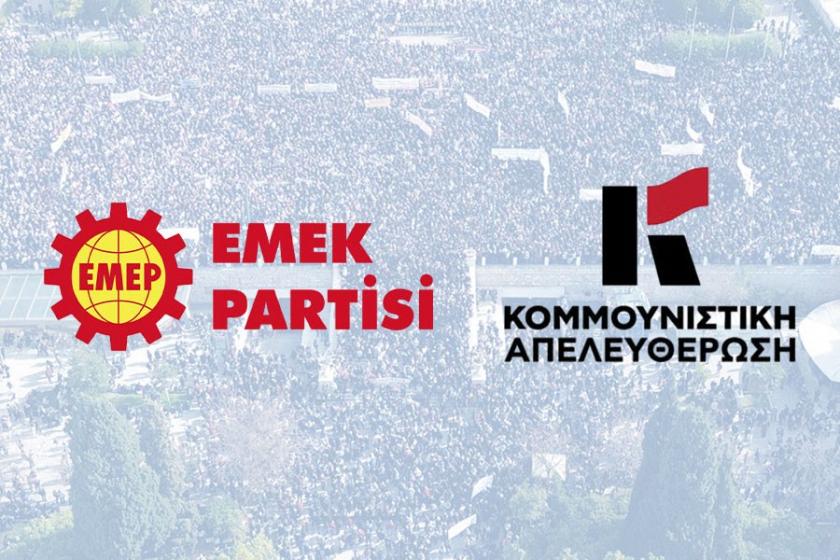Mücella Yapıcı: They’re trying again to criminalize what we set up six years ago in Gezi Protests
Master of Architecture Mücella Yapıcı from the Taksim Solidarity: They’re trying again to criminalize what we set up six years ago in Gezi Protests.

Fotoğraf: MA
Master of Architecture Mücella Yapıcı from the Taksim Solidarity secretariat responded to Zeliş Irmak's questions. We spoke to Yapıcı about the Gezi Protests trial. The key sections from Yapıcı's assessments are as follow:
“This is the second trial to be filed against me. We were acquitted in the previous trial. The trial has been filed with a rehashing of the former indictment. There is actually no charge against us. We stand charged according to Article 312 of the Turkish Penal Code of acting through “undemocratic” means to prevent the government from functioning. Additionally, fines of 140 billion lira are sought. They are holding us responsible for public assets and private property that suffered damage in that period. They are also holding us responsible for the death of eight of our children who died and 46 people who lost their eyes during the Gezi protests. This is the hardest thing of all to take. Mevlüt Saldoğan is one of the complainants listed in the indictment. Saldoğan is one of those responsible for Ali İsmail Korkmaz's death. They are alleging that Gezi was a pre-planned insurrection. We are faced with a fictional indictment.
They are nearly even connecting the insurrection in Egypt with us. Gezi was not an insurrection; it was a huge objection. It was a peaceful objection having no leaders or initiators. It was a situation having its outset in Erdoğan's proclamation of the Gezi park project in the 2011 elections and in which everyone contributed as they could and objected to the project. The Topçu Barracks was not a feasible affair in this country. When this plan was placed on display, we the Chamber of Architects and the Chamber of Town Planners cautioned the administrations. And, apart from defending the interests of our professions, we also have a such a duty as to caution administrators in such situations. We considered objecting and bringing legal action against the plan that had been placed on display. This square is virtually the first square of the Republic. On the other hand, it is the square of labour. Our objection was as a whole, for both the square and the park. We have a duty to explain this to society. Consequently, we said let’s summon everyone and explain the situation. We made an open invitation on 15 February 2012 and invited all sections of society. The mayor at the time, Kadir Topbaş, was also invited. We set up Taksim Solidarity with the participants there. We also settled on its name together with the participants. All the decisions we took we did so collectively through forums. I and one of our colleagues were assigned administrative duties at that meeting. We were simply in the position of facilitators of the work. Then, when we went to the municipality to forward our demands in a democratic manner, we were confronted by the police. When we then entered the park on the evening of 27 May they tried to get us out. Society’s conscience called out that day. All sections of society made their objections heard and said, ‘We don’t want to live under this oppression.’ Opposition to the women’s abortion affair, alcohol bans, interference in lifestyles, the 4+4+4 educational issue… Opposition to all this and the ongoing oppression drove the whole of society to objection. This was a peaceful objection. And if a crime is involved, it is that of those who say they gave the order. Platforms set up to express democratic demands in accordance with the Constitution are legal. All our announcements were public. In that case, they said who do we deal with? We the Taksim Solidarity secretariat said, ‘Us.’ An appointment was requested with President of the day Abdullah Gül. However, in place of Gül, Bülent Arınç appeared before the delegation. They said, ‘We have received your just demands.’ Then they looked into ‘what was called for.’ There was a second meeting. This was not a meeting at our request. I think people from the arts world had a meeting desiring to act as brokers. This was external to Taksim Solidarity’s will. They also wanted the presence of Solidarity at the meeting. But we did not go. A fairly aggressive meeting was held with the Prime Minister. They said they’d keep this to themselves and made do with a brief comment.
Gezi’s legitimacy cannot be described purely with reference to Taksim Solidarity. The legitimacy of the resistance in which all sections of society were involved also transcended the platform. However, it is said in the indictment that we used Taksim as an excuse and we are accused of overthrowing the government. We go to the polls nowadays at every election to remove the government. You removed the government with the presidential system following 15 July. You neutralized parliament. Why are you now accusing us?
Let’s look at the definition of coup in the Turkish Language Institute dictionary: ‘Forcing the government to resign through means that are democratic or undemocratic.’ Elsewhere a government would have resigned, anyway, under such a democratic insurrection. It is said, ‘A call for resignation was made through slogans.’ What’s the issue with this?
Following a submission by someone having no penal capacity, they declared Can Atalay, Osman Kavala and me to be the financers of Gezi. OK, let’s say Osman Kavala is rich. The man established a foundation and did various things as he saw fit. He sent two plastic tables, four or five stools and one hundred flaky pastries. Everyone did this, in fact. How is this financing? In Gezi, we set up a life in which money did not dominate. Financing what? At that time, we even sent back workers coming from municipalities. We cleaned the park. They are trying to criminalize an ideal life set up six years ago.
Why are you eliminating a square? Squares have memories. Even Hitler’s ovens are retained to serve as a lesson for people. But the ruling party wanted to construct itself in Taksim. The Topçu Barracks it was wished to remake were made on the Armenian Cemetery. It’s good that a park was made there so that people can get a tiny bit of fresh air. Gezi was a rebellion against all the lawlessness and violence. It is said in the indictment, dismissing the violence that was experienced in Gezi, ‘They tried to make it appear as if there were violence.’ Civil disobedience is a human right in the place where the law has ended. All the acts of civil disobedience in Gezi are deemed to be crimes. We supposedly trained ‘professional protestors’ who came from outside. The play called Me Minor is even deemed to be a crime. This is inexplicable to anyone. Not leaving home is also deemed a crime. So, the fifty per cent that did not leave home are also guilty.
I thought I’d bring the 657-page indictment but I couldn’t carry it. I don’t know what to say. It pains me even to have to defend Gezi. What kind of a trial is this? Gezi should actually be trying them. And they are the ones who are afraid. Today they have a mindset that once more sets us apart and whips people up against one another. If we come back together and stop reading intentions we can re-establish a wonderful world. The chain of fear was broken in Gezi. People broke the chains in their own brains. People unquestioningly held the hand of the one next to them. In Gezi, we learnt the ability to look from the west to the east. We experienced all of this in Gezi. I strongly believe that one day the world will break these chains of fear again.
Turkey’s agenda changes so quickly. There is an insistence on not speaking about Gezi and the trial today. A fear has been constructed once more as if it might harm election campaigning. The ruling party projects strength out of fear. I see that people have hope again because people have finally become sick of marginalization. I hope and expect that professional people and those in academia who are afraid to raise their voice for their own survival will speak up. If we are still incapable of opposing injustice we’ll bequeath a very bad world to our kids.” (EVRENSEL DAILY)
(Translated by Tim Drayton)
{{381993}}
WHAT HAPPENED DURING THE GEZI PROTESTS?
A wave of demonstrations and civil unrest in Turkey began on 28 May 2013, initially to contest the urban development plan for Istanbul's Taksim Gezi Park. The protests were sparked by outrage at the violent eviction of a sit-in at the park protesting the plan. Subsequently, supporting protests and strikes took place across Turkey, protesting a wide range of concerns at the core of which were issues of freedom of the press, of expression, assembly, and the government's encroachment on Turkey's secularism.
3.5 million people are estimated to have taken an active part in almost 5,000 demonstrations across Turkey connected with the original Gezi Park protest. 11 people were killed and more than 8,000 were injured.






Follow Evrensel